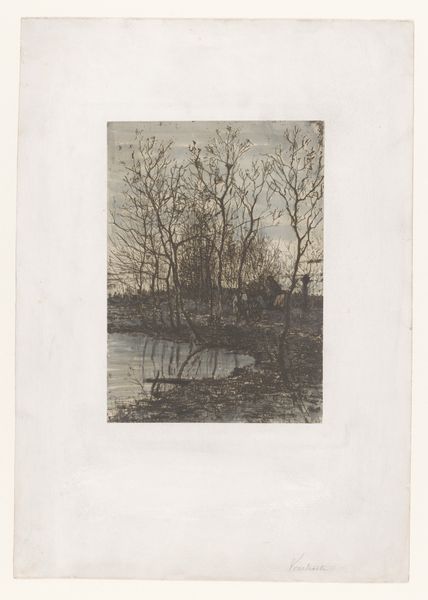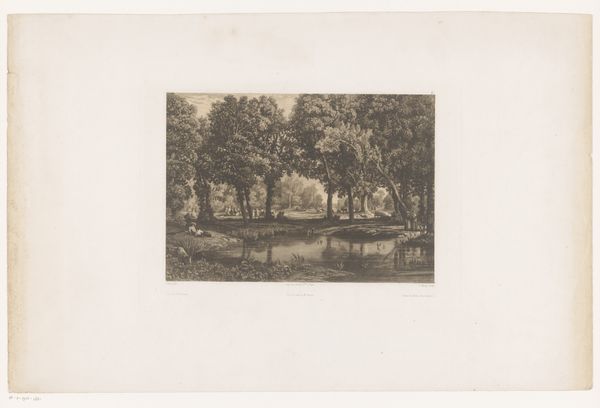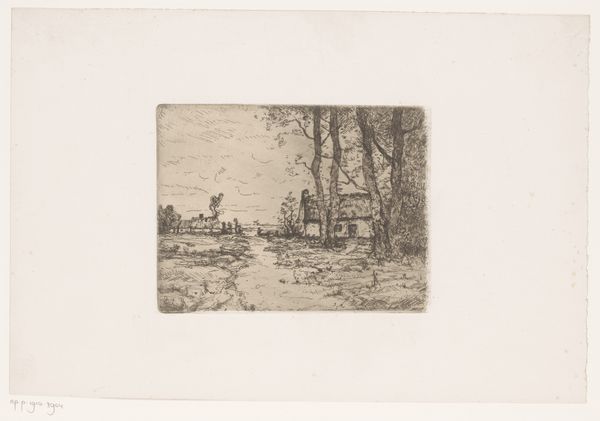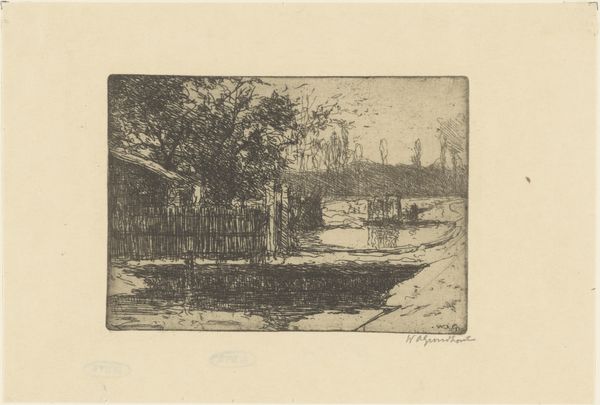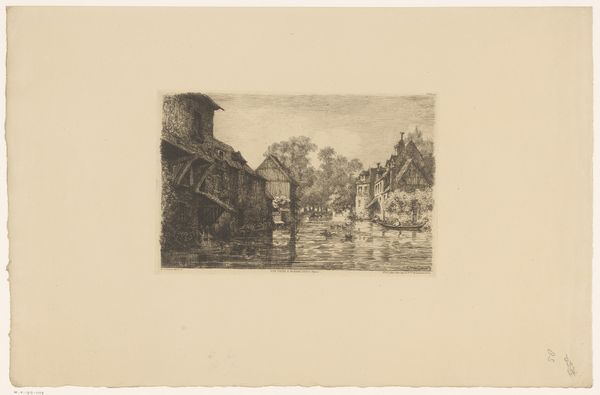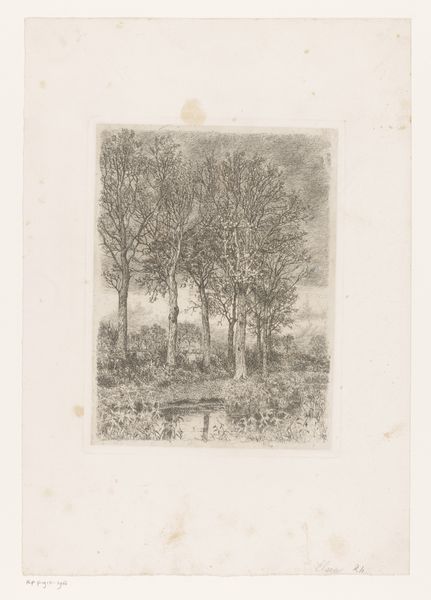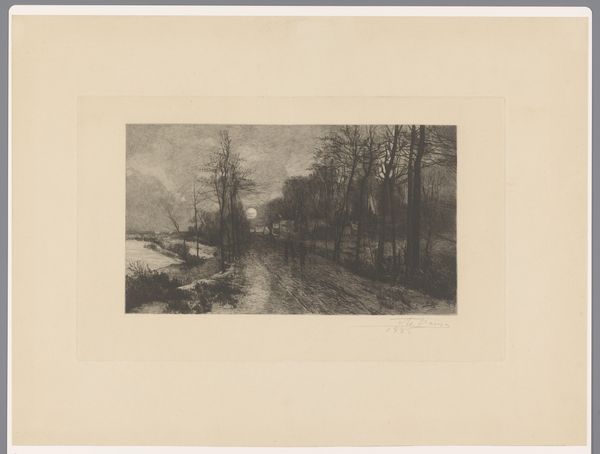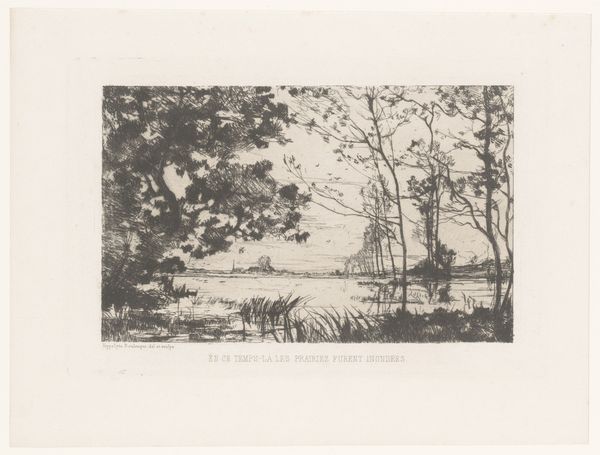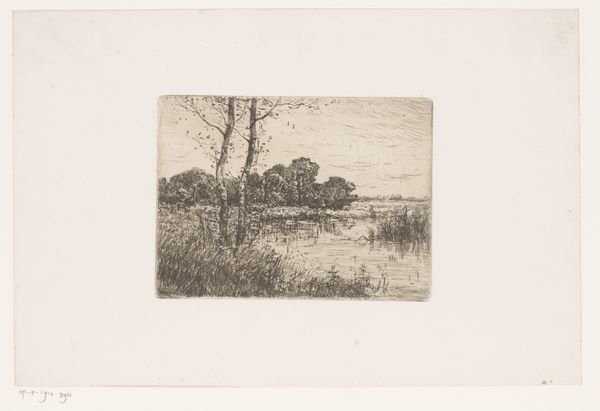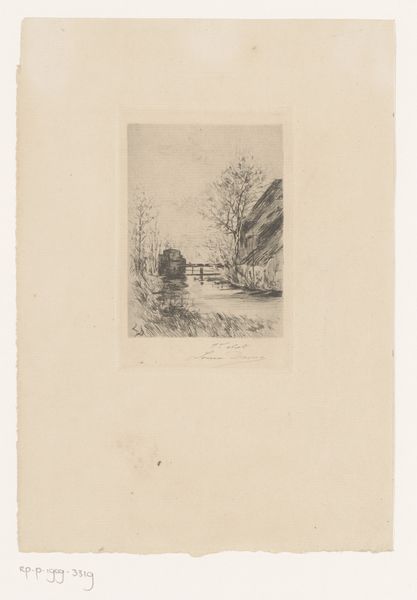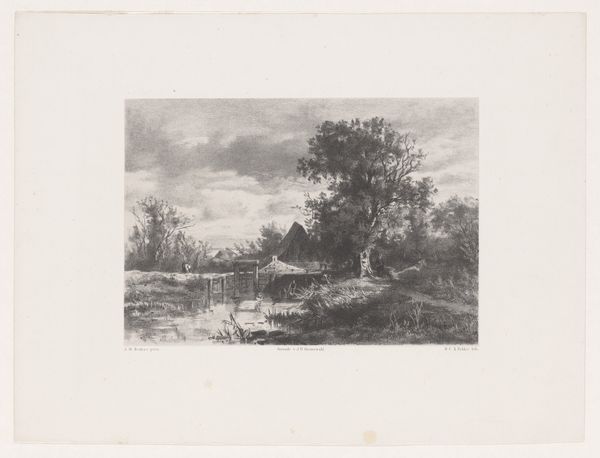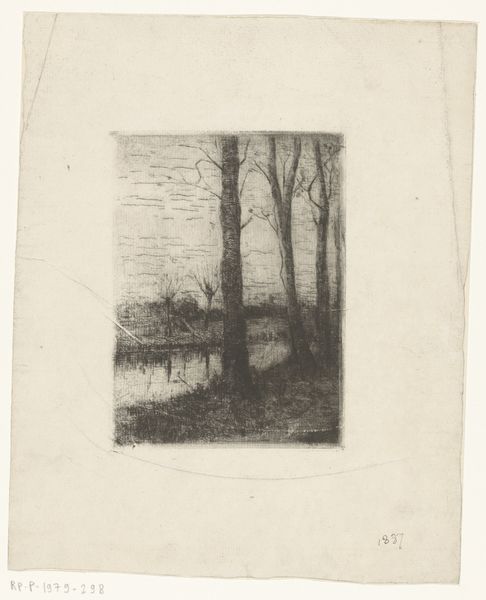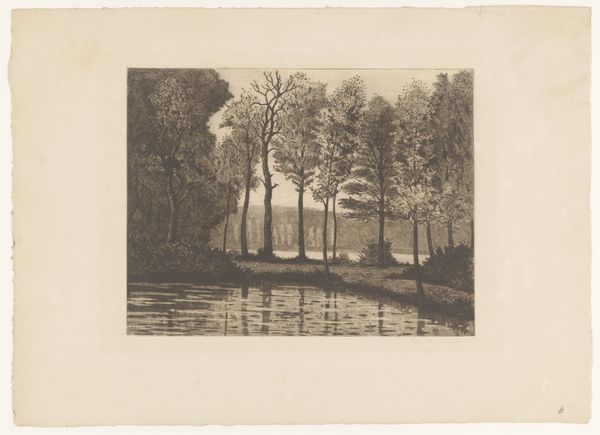
print, etching
# print
#
etching
#
landscape
#
cityscape
Dimensions: height 190 mm, width 240 mm
Copyright: Rijks Museum: Open Domain
Curator: Looking at this etching titled "View of a Factory by the Water After a Fire," attributed to Marcel Jefferys and estimated to have been created sometime between 1882 and 1924, I'm struck by the mood. It feels almost like a ghost town, or a ruin of the industrial age. Editor: Absolutely. There's a palpable sense of desolation. The factory looming against the sky, the skeletal trees reflected in the water…it evokes the human cost of industrial expansion, that constant cycle of building, burning, and rebuilding. Curator: Jeffrey's print certainly draws our attention to those costs. We must remember that landscape art throughout the 19th century, as here, frequently mirrored societal concerns regarding pollution and degradation resulting from increasing industrialization. Editor: Exactly! This scene isn't merely about a factory; it’s a statement. This depiction prompts questions: Who worked here? How did the fire impact their lives? The cityscape has undertones of race, gender, and class. The aftermath, I suspect, burdened already marginalized populations. Curator: Yes, but even looking at it more formally, there’s also a striking technical tension. It uses delicate lines to portray a scene of apparent destruction. Jeffrey's use of light and shadow gives a grim appearance of resilience as nature finds its place back to its industrial surrounding. Editor: I'd argue that the resilience isn't just in the scene but in the community. It suggests themes of resilience in labor movements after catastrophic failure, of coming together collectively in spite of the powers that lead to that fire. Curator: The scene, therefore, captures this historical paradox of both immense tragedy and hopeful tenacity that is worth our reflection today. Editor: Right. Looking at it, one hopes that our own era’s artists reflect just as critically on the ecological and social upheavals of our present day. The image functions not only as documentation, but as caution as well.
Comments
No comments
Be the first to comment and join the conversation on the ultimate creative platform.
